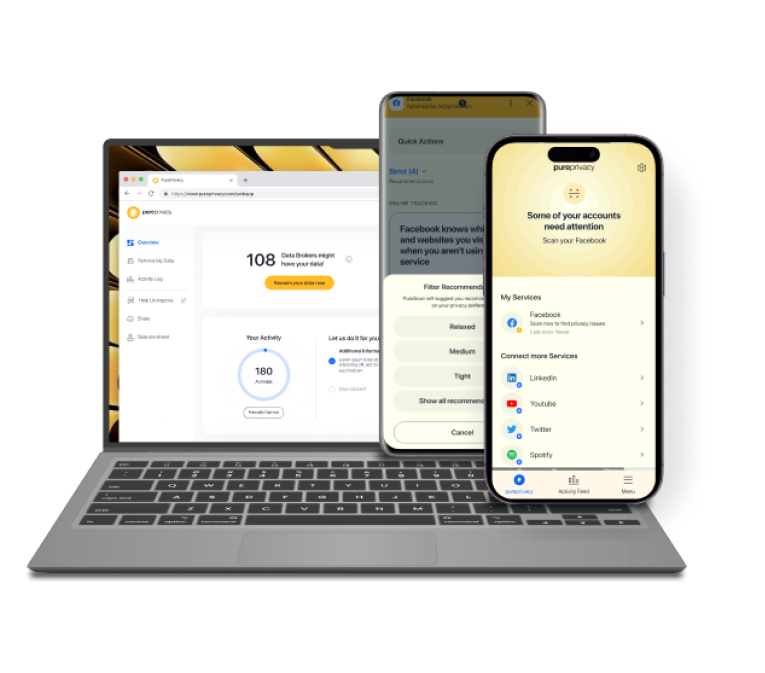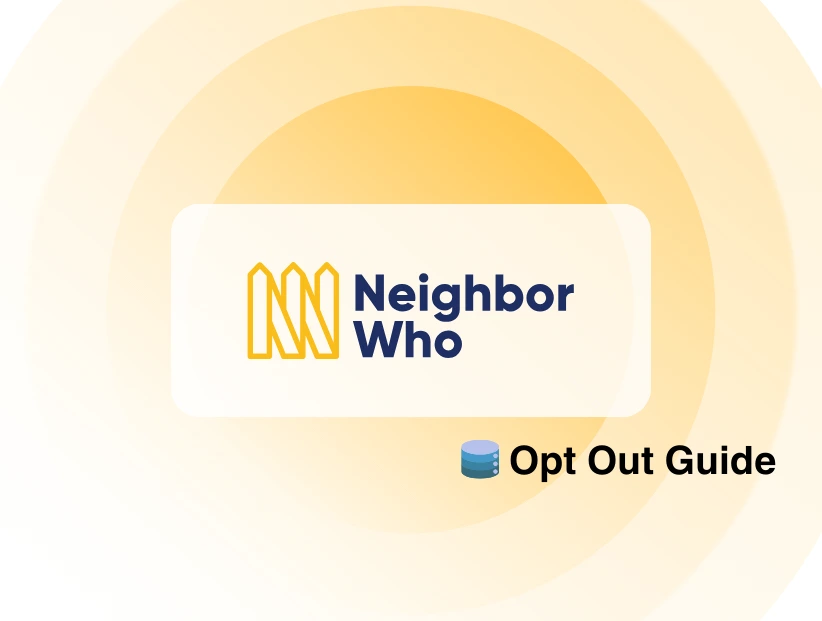Table of Content
- What Happened in the Mother of All Data Breaches (MOAB)?
- Which Companies are Affected by the MOAB?
- What Type of Data Has Been Impacted by the Massive Breach?
- What are the Potential Privacy Risks from Exposed Data?
- How to Take Immediate Action in Case of a Data Breach
- Frequently Asked Questions (FAQs)
A massive data breach, dubbed the Mother of All Data Breaches has exposed data of 26 billion users on Adobe, Twitter, LinkedIn.
This is not just a number, but a big wake-up call!
Did you know that your name, credit card number, and SSN could be in the hands of hackers and scammers?
They can drain your bank account or use your identity for impersonation attacks, ruining your online reputation and financial score.
This blog explains everything about the Mother of All Data Breaches, and how you can protect your data from online threats.
What Happened in the Mother of All Data Breaches (MOAB)?
The biggest data breach in history was found in the early months of 2024, shocking the cybersecurity community and giving it the nickname "Mother of All Breaches" (MOAB).
In this extraordinary incident, more than 26 billion records—including an incredible 12 terabytes of private, sensitive data—were made public.
Although the source of the attack is unknown, thousands of domains—including well-known IT companies and social media platforms—were affected by the data leak.
Discover if Your Most Critical Identifiers Have Been Exposed on the Dark Web
Receive timely alerts and actionable insights with PurePrivacy's Dark Web Monitoring.
The magnitude of MOAB is shocking. It included an array of personal information, including email addresses, passwords, usernames, and even financial data. This vast collection of private information posed a serious risk to both people and businesses.
This information may be used by cybercriminals for financial fraud, phishing scams, identity theft, and other malicious activities.
The owner of the MOAB, according to researchers, may be a malicious actor, a data broker, or another service that deals with massive volumes of data as they have a stake in keeping a lot of data.
The researchers said:
“The dataset is extremely dangerous as threat actors could leverage the aggregated data for a wide range of attacks, including identity theft, sophisticated phishing schemes, targeted cyberattacks, and unauthorized access to personal and sensitive accounts.”
Which Companies are Affected by the MOAB?
The dataset was found by security researcher Bob Diachenko of SecurityDiscovery.com. It includes data from international social media platforms and internet services.
His research indicates that the database contains breaches, reindexed leaks, and datasets that were privately auctioned. With 1.5 billion records, the Chinese social media behemoth Tencent has the most, followed by 504 million from Tencent's Weibo, 360 million from MySpace, and 281 million from X.
Several government agencies, Adobe, Dropbox, LinkedIn, MyFitnessPal, and Telegram are among the other well-known companies implicated in the breach. It also affects a large number of less popular, smaller companies.
What Type of Data Has Been Impacted by the Massive Breach?
Hundreds of millions of records are presumably available from numerous corporations and organizations, including:
- Weibo (504M)
- MySpace (360M)
- Twitter (281M)
- Deezer (258M)
- Linkedin (251M)
- AdultFriendFinder (220M)
- Adobe (153M)
- Canva (143M)
- VK (101M)
- Daily Motion (86M)
- Dropbox (69M)
Telegram (41M)
Records from numerous government agencies in the US, Brazil, Germany, the Philippines, Turkey, and other countries are also included in the leak.
? “Mother of All Data Breaches”
— Jane Adams (@iLoveJaneAdams) February 9, 2024
26 billion account records stolen from Twitter, LinkedIn, Telegram, Snapchat, Evite, Canva, AdultFriendFinder, and more!
At 12 terabytes, it’s the largest compilation of multiple breaches!
Update all your passwords. ?pic.twitter.com/OCeKasQ06Y
The team believes that this significant data leak will have a disastrous effect on customers. Because passwords are frequently reused, hackers might attempt a constant barrage of unauthorized login attempts.
According to the researchers:
“If users use the same passwords for their Netflix account as they do for their Gmail account, attackers can use this to pivot towards other, more sensitive accounts.
Apart from that, users whose data has been included in supermassive MOAB may become victims of spear-phishing attacks or receive high levels of spam emails.”
What are the Potential Privacy Risks from Exposed Data?
The underlying serious privacy risks are consistent across such events. Here are the following that may cause you severe damage:
Impersonating Your Identity
Cybercriminals can use publicly available personal information, such as names, Social Security numbers, addresses, and bank account information, to assume the identity of a victim.
Stealing Money
Unauthorized transactions can be made using exposed financial data, such as credit card numbers, bank account information, and online payment credentials, costing victims money.
Blackmailing and Extortion
Victims may be forced into giving up money or other favors in exchange for sensitive personal information, such as sexual orientation, health records, or compromising images.
Defaming Your Image
When private or embarrassing information is disclosed, it may cause damage to one's reputation. This may have an impact on relationships, work, and general well-being.
Profiling and Discrimination
Disclosed information might be utilized to build comprehensive profiles of people for specialized advertising or even for spying.
Data Brokerage
Information compiled and sold for a variety of objectives, such as marketing, fraud, and identity theft, can be obtained by selling stolen data to data brokers on the dark web.
Increased Dangers in Significant Breach
Mass-Scaling Identity Theft
The possibility of identity theft grows dramatically when large volumes of data are stolen, potentially impacting millions of people at once.
Impacting the System
Serious violations may destroy public confidence in organizations and processes, which can cause social unrest and economic instability.
How to Take Immediate Action in Case of a Data Breach
Although the "mother of all data breaches" is a terrible occurrence, damage can be greatly reduced with a thoughtful incident response plan. Here is a checklist of actions you should do right away:
- Change your passwords as soon as possible, and register for a password manager to help reduce the chances of identity theft.
- In addition, make sure that two-factor authentication is enabled on all of your accounts and remain alert for phishing emails.
- Identify the compromised systems and data to ascertain the extent of the breach.
- If your company is worried about account hijacking, you should start investing in zero-trust facilities right away.
- Regularly conduct security assessments to find weaknesses and strengthen the position of your company.
Monitor the Dark Web & Take Action
You can sleep soundly knowing that PurePrivacy will notify you whenever someone posts your information on the dark web.
Send and View Data Removal Requests
You can block 1000+ invisible trackers and send recurring opt-out requests to 200+ data brokers to disappear from publicly available platforms.
Scan & Update Social Media Privacy Settings
You can assess your privacy settings, uncover security vulnerabilities, and receive practical tips to enhance your online privacy.
Stop Intrusive Ads and Online Tracking
You can use PurePrivacy to protect yourself from intrusive ads and block any attempts to collect personal data (name, address, SSN, court records, criminal records).
Frequently Asked Questions (FAQs)
-
What breach was the mother of all breaches?

Security researcher Bob Diachenko of Security Discovery found a 26 billion record data leak in January 2024. The size of this data breach—which includes 12 gigabytes of customer data from 3,876 domains—has led to it being dubbed The Mother Of All Breaches, or MOAB.
-
Which 2024 data breach is the largest?

According to the lawsuit, the breach happened around April 2024 and involved a hacking group named USDoD obtaining billions of people's unencrypted personal data from a background check organization called National Public Data (NPD).
-
How do password leaks happen?

How this takes place: Hackers target websites that use weak privacy policies to simultaneously steal the account information of hundreds or even millions of users. This can contain SSNs, credit card information, and login credentials.
-
When did the first massive data breach occur?

On April 5, 2002, 250,000 social security numbers that the State of California had gathered were taken from a data center in the first known data breach. It is challenging to estimate the frequency of data breaches before the broad implementation of data breach notification legislation in 2005.
In Summary
The Mother of All Breaches is a historic disaster for personal information security. The critical need for strengthened cybersecurity to prevent sensitive information from getting into the wrong hands is highlighted by this significant data leak.
Consider using PurePrivacy to ensure your online data is safe from hackers, scammers, doxxers, and malicious actors.





